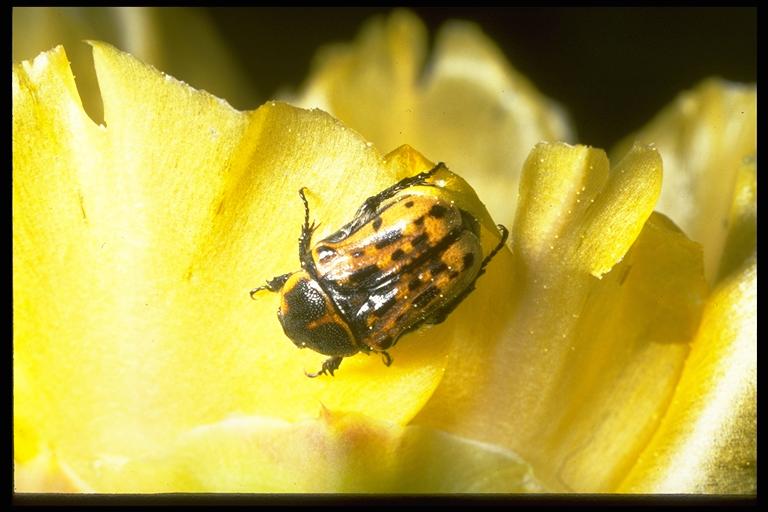
Green June beetle, Cotinis nitida (Linnaeus) (Coleoptera: Scarabeidae). Photo by Drees.
Common Name: Green June beetle
Scientific Name: Cotinis nitida (Linnaeus)
Order: Coleoptera
Description: Beetles are about 1-inch long and 1/2-inch wide and are colored dull velvety-green on the top, with the sides of the shield behind the head (pronotum) and margins of the flattened wing covers (elytra) a brownish-yellow and underside a bright metallic green with orange-yellow areas. Eggs are oval and grayish. Larvae are creamy white C-shaped grubs, with a dark brown head, well-developed legs like June beetle larvae and grow up to 2 inches long. C. texana Casey is a similar species that is also recorded from Texas.
Life Cycle: Female beetles lay eggs in the soil. Larvae hatching from eggs feed on humus, decaying plants, roots and manure before spending the winter deep in the soil. They pupate in earthen cells in the spring and adults emerge in June or July. There is one generation per year.
Habitat and Food Source(s): Mouthparts are for chewing. Larvae feed in the soil on turfgrasses, corn, oats, sorghum alfalfa, vegetables, tobacco and ornamental plants. Larvae have a peculiar habit of “crawling” on their backs when migrating on the soil surface. Adults feed on over-ripe fruit like peaches and sometimes on peach leaves. Adults can be found flying in the air or can be attracted to fermented fruit baits, or from over-ripe fruits and some flowers. They can be collected in a net or beaten into a container.

Flower-feeding scarab, Euphoria kerni Haldemann (Coleoptera: Scarabeidae), adult (not black form). Photo by Drees.
Pest Status: Adult beetles are attracted to decaying or ripe fruit and feed on such; larvae are infrequent pests in lawns and feed on roots of other plants; medically harmless.
For additional information, contact your local Texas A&M AgriLife Extension Service agent or search for other state Extension offices.
Literature: Metcalf et al. 1962; Swan & Papp 1972.